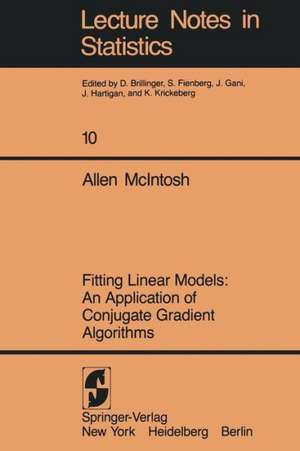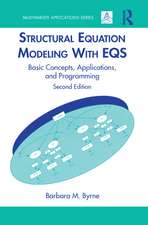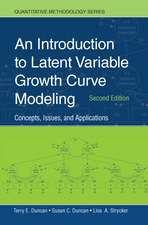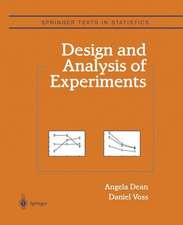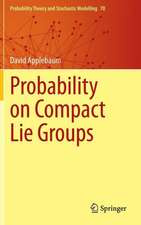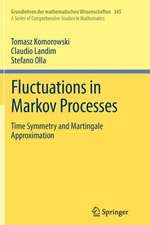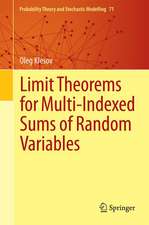Fitting Linear Models: An Application of Conjugate Gradient Algorithms: Lecture Notes in Statistics, cartea 10
Autor A. McIntoshen Limba Engleză Paperback – 18 aug 1982
Din seria Lecture Notes in Statistics
- 15%
 Preț: 631.86 lei
Preț: 631.86 lei -
 Preț: 385.84 lei
Preț: 385.84 lei - 17%
 Preț: 490.20 lei
Preț: 490.20 lei - 17%
 Preț: 460.30 lei
Preț: 460.30 lei - 18%
 Preț: 945.92 lei
Preț: 945.92 lei - 20%
 Preț: 561.44 lei
Preț: 561.44 lei - 18%
 Preț: 943.25 lei
Preț: 943.25 lei - 18%
 Preț: 943.25 lei
Preț: 943.25 lei - 18%
 Preț: 990.57 lei
Preț: 990.57 lei - 15%
 Preț: 641.38 lei
Preț: 641.38 lei -
 Preț: 428.67 lei
Preț: 428.67 lei - 15%
 Preț: 633.53 lei
Preț: 633.53 lei - 15%
 Preț: 658.88 lei
Preț: 658.88 lei -
 Preț: 383.33 lei
Preț: 383.33 lei - 15%
 Preț: 640.71 lei
Preț: 640.71 lei - 18%
 Preț: 947.18 lei
Preț: 947.18 lei - 18%
 Preț: 1007.35 lei
Preț: 1007.35 lei - 18%
 Preț: 942.63 lei
Preț: 942.63 lei - 15%
 Preț: 639.59 lei
Preț: 639.59 lei - 18%
 Preț: 1231.47 lei
Preț: 1231.47 lei - 15%
 Preț: 643.00 lei
Preț: 643.00 lei - 18%
 Preț: 886.62 lei
Preț: 886.62 lei - 15%
 Preț: 633.35 lei
Preț: 633.35 lei - 15%
 Preț: 635.65 lei
Preț: 635.65 lei -
 Preț: 393.74 lei
Preț: 393.74 lei - 15%
 Preț: 632.70 lei
Preț: 632.70 lei - 15%
 Preț: 637.28 lei
Preț: 637.28 lei - 15%
 Preț: 702.87 lei
Preț: 702.87 lei - 15%
 Preț: 642.68 lei
Preț: 642.68 lei - 15%
 Preț: 644.63 lei
Preț: 644.63 lei - 15%
 Preț: 645.14 lei
Preț: 645.14 lei -
 Preț: 382.36 lei
Preț: 382.36 lei - 15%
 Preț: 636.30 lei
Preț: 636.30 lei - 15%
 Preț: 647.92 lei
Preț: 647.92 lei -
 Preț: 380.63 lei
Preț: 380.63 lei - 18%
 Preț: 887.05 lei
Preț: 887.05 lei - 15%
 Preț: 634.32 lei
Preț: 634.32 lei - 15%
 Preț: 648.74 lei
Preț: 648.74 lei -
 Preț: 378.92 lei
Preț: 378.92 lei - 15%
 Preț: 648.56 lei
Preț: 648.56 lei - 15%
 Preț: 647.59 lei
Preț: 647.59 lei - 18%
 Preț: 780.37 lei
Preț: 780.37 lei - 15%
 Preț: 641.20 lei
Preț: 641.20 lei - 18%
 Preț: 1102.69 lei
Preț: 1102.69 lei - 15%
 Preț: 643.16 lei
Preț: 643.16 lei -
 Preț: 384.70 lei
Preț: 384.70 lei
Preț: 383.12 lei
Nou
Puncte Express: 575
Preț estimativ în valută:
73.32€ • 79.61$ • 61.59£
73.32€ • 79.61$ • 61.59£
Carte tipărită la comandă
Livrare economică 22 aprilie-06 mai
Preluare comenzi: 021 569.72.76
Specificații
ISBN-13: 9780387907468
ISBN-10: 0387907467
Pagini: 200
Ilustrații: 200 p.
Dimensiuni: 155 x 235 x 11 mm
Greutate: 0.3 kg
Ediția:Softcover reprint of the original 1st ed. 1982
Editura: Springer
Colecția Springer
Seria Lecture Notes in Statistics
Locul publicării:New York, NY, United States
ISBN-10: 0387907467
Pagini: 200
Ilustrații: 200 p.
Dimensiuni: 155 x 235 x 11 mm
Greutate: 0.3 kg
Ediția:Softcover reprint of the original 1st ed. 1982
Editura: Springer
Colecția Springer
Seria Lecture Notes in Statistics
Locul publicării:New York, NY, United States
Public țintă
ResearchCuprins
1. Preliminaries.- 1.1 Introduction.- 1.2 Notation Used in This Thesis.- 2. The Linear Model.- 2.1 The Gaussian Linear Model.- 2.2 Specifying an Arbitrary Model.- 2.3 Effective Balance.- 2.4 The Generalized Linear Model.- 3. The Conjugate Gradient Algorithm.- 3.1 Minimization Concepts.- 3.2 The Basic Algorithm.- 3.3 Convergence Considerations.- 3.4 The Non-Full Rank Case.- 3.5 Computational Details.- 3.6 Preconditioning.- 4. Applications: The Non-Full Rank Case.- 4.1 A Direct Sum Decomposition.- 4.2 Enumeration of Eigenvalues.- 4.3 Complete Factorial Designs.- 4.4 Other Designs.- 4.5 Preconditioning.- 5. Applications: The Full Rank Case.- 5.1 A Full Rank Parameterization.- 5.2 Hierarchical Models.- 5.3 Eigenvalues for Complete Factorial Designs.- 5.4 Other Designs.- 5.5 Preconditioning.- 6. Examples: Gaussian Linear Models.- 6.1 Implementation Details.- 6.2 The General 3-Way Case.- 6.3 A Blocked 23 Experiment.- 6.4 A Fractional 34 Experiment.- 6.5 A Quasi Latin Square Example.- 6.6 A Balanced Incomplete Block Example.- 7. Examples: Generalized Linear Models.- 7.1 Implementation Details.- 7.2 A 3x24 Loglinear Model.- 7.3 22 Loglinear Model on a Latin Square.- 7.4 A 3x22 Binomial Example.- 7.5 A Combined Loglinear and Binomial Example.- 8. Concluding Remarks.- References.- Appendices.- A. Algorithms.- A.I Hestenes-Stiefel Algorithm.- A.2 Beale Algorithm.- A.3 Preconditioned Hestenes-Stiefel Algorithm.- A.4 Hemmerle’s Algorithm with Line Search;.- A.5 Hestenes-Stiefel Algorithm with Hemmerle’s Preconditioning.- A.6 Eigenvalues, Non-Full Rank Parameterization.- A.7 Eigenvalues, Full Rank Parameterization.- B. GLIM Output.
